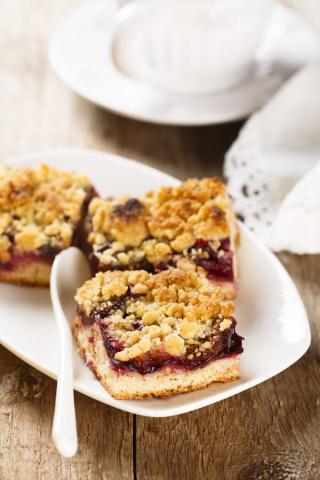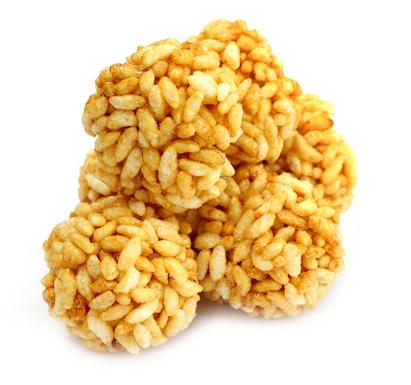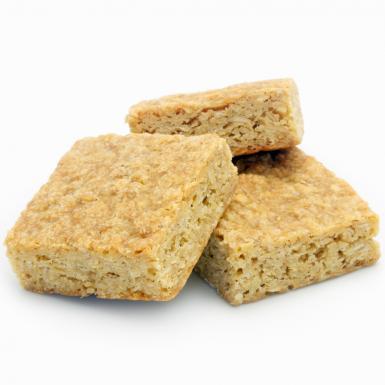- 11 Tablespoons (225g) Plain Flour
- ½ Pinch (1g) Salt
- 7 Tablespoons (110g) Margarine (Don't allow this to soften)
- 10 Tablespoons (100ml) Water
- 1 medium sized (4kg) Pumpkin
- 2 (100g) Eggs
- 5 Tablespoons (100g) Sugar
- 2 Teaspoons (6g) Cinnamon
Ingredients
Allergy Disclaimer
Always check the label of each ingredient for allergy warnings.
Method
- Place flour and salt into a bowl and add margarine. It is important to use the margarine straight from the fridge so it is chilled. Rub the margarine and flour between fingers and thumbs until it looks like breadcrumbs.
- Gradually add the water and stir until the ingredients stick together. The pastry should not be too sticky you may not use all the water. Wrap in cling film and put in fridge for 1 hour.
- Preheat the oven to 180°C / 160°C fan oven / 350°F / gas mark 4.
- Roll pastry out flat using a rolling pin or a glass bottle (or similar). Try to keep it cool, you could wash your hands in cold water before taking it out of the fridge. The pastry should be a big enough circle to fill a 20cm wide flan dish/ tin.
- Line the ring with greaseproof (baking) paper and then place the pastry into the tin. Use your fingers to ensure it molds into the sides, then use a table knife to trim any overlapping the edges. Prick the pastry gently with a fork.
- Place another piece of greaseproof paper on top of the pastry and fill the tin with baking beans (you could use dried pulses or rice as an alternative). Bake in oven for 12 minutes then remove the beans and paper from the top of the pastry and return to oven for a further 5 minutes.
- Meanwhile remove the flesh from the pumpkin by cutting the top off and use a knife and spoon to remove the flesh, discarding any seeds.
- Cut the pumpkin flesh into similar size pieces and cook in boiling water until soft, approximately 15 minutes. Drain and mash with a masher or fork then leave to cool.
- Once the pastry has been removed from the oven set temperature to 190°C / 170°C fan oven / 375°F / gas mark 5.
- Crack the eggs in a bowl and mix using a fork or whisk, adding in the sugar then stir into the pumpkin. Add cinnamon if desired.
- Pour the pumpkin filling into the pastry case and bake in oven for about 45 minutes until the filling has set. Allow to cool then portion and serve.
Time Saver Tips
Make pastry in advance or buy a ready made sweet pastry case.
Cost Saver Tips
A good use of the inside of a carved pumpkin
Tips for Kids
This recipe uses the inside of their pumpkin and they will enjoy scooping out the flesh and carving it. They can also help with rolling out the pastry.
Nutritional Information
Based on a single serving of 155g (% of an adult's reference intake)
Energy
267 kcals ( 13 %)
1,113 kJ ( 13 %)
Fat
4 g ( 20 %)
Saturates
36.6 g ( %)
Sugar
14.9 g ( 17 %)
Salt
0.3 g ( 5 %)
Detailed nutritional information
| Per 100g | Per 155g serving | |
|---|---|---|
| Energy Kcals | 172 | 267 |
| Energy Kj | 718 | 1,113 |
| Protein | 3.1 g | 4.8 g |
| Total Fat | g | g |
| Saturated Fat | 2.6 g | 4 g |
| Carbohydrates | 23.6 g | 36.6 g |
| Total Sugars | 9.6 g | 14.9 g |
| NSP Fibre | 1.1 g | 1.7 g |
| Sodium | 82 mg | 127 mg |
| Salt | 0.2 g | 0.3 g |
Find out about nutritional labelling
Nutrition labels on the front of packaging
- Most of the big supermarkets and many food manufacturers display nutritional information on the front of pre-packed food.
- Front of pack nutrition labels provide information on the number of grams of fat, saturated fat, sugars and salt and the amount of energy (in kJ and kcal) in a serving or portion of a recipe.
- The labels also include information about reference intakes (expressed as a percentage) which are guidelines about the approximate amount of particular nutrients and energy required for a healthy diet.
- The colour coding tells you at a glance if the food has high (red), medium (amber) or low (green) amounts of fat, saturated fat, sugars and salt.
- The more greens on the label, the healthier the choice
- Amber means neither high nor low, so you can eat foods with all or mostly ambers on the label most of the time.
- Reds on the label means the food is high in that nutrient and these are the foods we should cut down on. Try to eat these foods less often and in small amounts.
Food shopping tips
If you’re trying to decide which product to choose, check to see if there's a nutrition label on the front of the pack. This will help you to quickly assess how your choices stack up. You will often find a mixture of red, amber and green colour coding for the nutrients. So when you're choosing between similar products, try to go for more greens and ambers and fewer reds if you want to make a healthier choice.
 Activities & Play
Activities & Play Behaviour
Behaviour Childcare
Childcare Development & Growing Up
Development & Growing Up Family, Friends & Relationships
Family, Friends & Relationships Feeding Your Baby
Feeding Your Baby Food & Eating
Food & Eating Health & Safety
Health & Safety Mental Health & Wellbeing
Mental Health & Wellbeing Money & Work
Money & Work Online Behaviour & Safety
Online Behaviour & Safety Pregnancy & First Days
Pregnancy & First Days School & Education
School & Education Sleep
Sleep




























